Phytopharmacology ancestral knowledge versus science
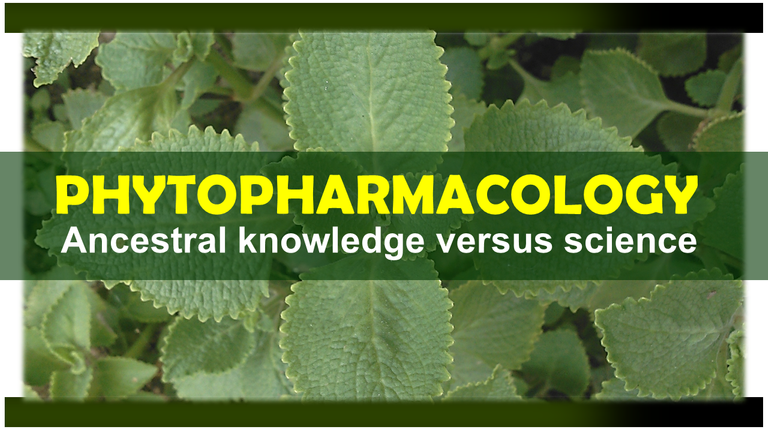
With this contribution, I will be describing approaches related to ancestral and scientific knowledge about Phytopharmacology, with the objective of socializing with the users of the #Hive platform, theoretical details related to this important topic and its importance for health.
Introduction
The use of plant specimens to treat diseases that over time have diminished the health of human beings, is undoubtedly a practice as old as its appearance on earth, hence, primitive man is linked to pharmacology, to ponder the ancestral knowledge and its link with each of the phases that has experienced scientific growth in phytopharmacology.
In addition to the ancestral knowledge of primitive character, religion and various cultural and scientific expressions have contributed significantly in the most prominent advances in phytopharmacology, among the most prominent is the isolation of Alkaloids substances (secondary metabolites from plant species), as this scientific event was able to demonstrate the effectiveness of certain plant substances as active ingredients to cure multiple diseases [1] .
Consequently, and considering that there is scarce information on phytopharmacology, the objective of this post is to socialize elements on ancestral and scientific knowledge, detailing the conceptual elements, types of phytopharmaceuticals, and what is related to the phytopharmaceutical industry and organic formulations.
General information
Man, disease and cure
Paleomedicine
According to multiple theoretical conjectures and evolutionary interpretations, after the appearance of the first bacteria on the planet, the weakest specimens of the animal kingdom, product of fights for food and the dispute for territory, began to present infections in the bodily wounds caused by the strongest or dominant specimens, This context is the object of analysis for archaeological specialists, who have inferred that prehistoric man was accumulating primitive knowledge, realizing that the infectious pictures in animals decreased when they chose to consume certain plant species.
Sacred tenets
Man has always been influenced by the supernatural, which is why it is assumed that this spiritual inspiration is undoubtedly the main reason or major interest in the constant search for sacred plants that God has provided in abundance to nature. In this sense, man carried by this religious perception, uses certain plant specimens for the preparation of Potions among these we have, the most enigmatic or Lotus flower Nelumbo nucifera, and those of greater religious credit for being in the Holy Scriptures (Bible), such as; the Incense tree (Boswellia spp. ), Poplar (Populus euphratica), Higbert (Ficus carica), Walnut tree (Juglans regia), among others.
These plant specimens, as enigmatic as the rest of those that appear in the Bible, were used for the preparation of potions and applied to sick people in rituals, as a sign of worship to their Gods, in this context appear the priests, exorcists, healers, witchdoctors and others, who were responsible for preparing these drinks, in the search to soothe body aches, induce vomiting, purge, and treat fever, among others.
Man and methodical doubt
Even though religious influence marks a before and after in the moral conception of man, this spiritual authority was not an obstacle for the Arab, Indian and Chinese societies, which through a higher degree of discernment and led by observation, managed to deepen the use of plant species for the development of medicines, for this purpose they promoted the creation of schools for the training of botanists, who were responsible for determining the use of certain herbs for medicinal and therapeutic purposes.

Fig. 2 Melissa officinalis plant species of medicinal interest. Author: @lupafilotaxia.
The microscope and organic chemistry
A key point, which encouraged the use of plant species for the development of medicines, arose practically in the seventeenth and eighteenth century with the discovery of the microscope, because from that moment man began to observe and characterize the microorganisms responsible for the emergence of multiple diseases, a situation that triggered objective experiments that achieved valuable results, hence, it is said that this practice generated the experimentation and much of the current knowledge in phytopharmacology.
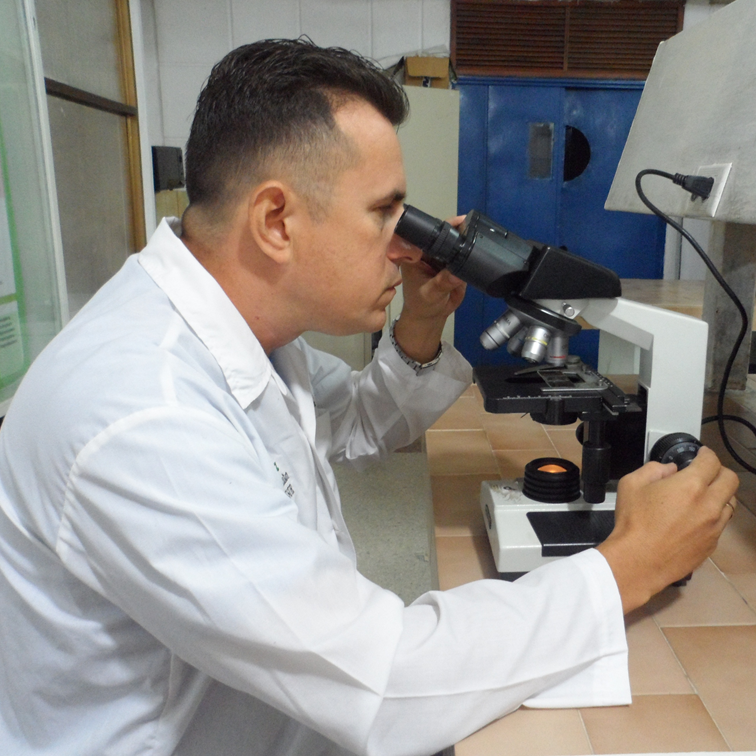
Fig. 3 The electron microscope was of great help to biological sciences including pharmacology. Author: @lupafilotaxia.
The creation of the microscope, helped to such an extent the phytopharmacological growth, that in the XIX century these investigations were crossed with the knowledge in organic chemistry, managing to isolate the Alkaloids substances that come from the vegetable species, and thus demonstrate its effectiveness as fio-substance to cure infections, the most emblematic result was to isolate Morphine, which is a nitrogenous base possessed by the specimens commonly known as poppy.
Phytopharmaceutical
From a constructive theoretical conception, the term phytopharmaceutical refers to the product, drug or medicine made from plant specimens, where the main raw material is based on organographic structures, either from aerial segments, essentially stems, leaf blades and flowers, or subway as primary, secondary or tertiary roots of a plant, materials that are used by the phytopharmaceutical industry to obtain infusions, extracts, concoctions, juices, oils and creams with therapeutic and medicinal action.

Fig. 4 Phytopharmaceutical as a theoretical construct. Autor: @lupafilotaxia.
Phyto-metabolites
From the physiological point of view, it is essential to point out that plant specimens produce two types of metabolites in order to guarantee their phenological cycles, as follows:
1. Primary metabolites
They are substances used by plant species in vital processes such as photosynthesis, respiration, growth, development and reproduction
2. Secondary metabolites
Secondary substances used by plant species to defend themselves from attack by external pathogens such as fungi, bacteria, nematodes and viruses.
In this sense, we must emphasize that among the secondary metabolites that man has been able to isolate, those with the greatest defensive power are the Alkaloids, hence, he uses these substances to extract their healing potential to treat his own diseases.
Phytometabolites and synthetic molecules
As mentioned, the secondary metabolites coming from plant specimens either from roots, stems, leaf blades, flowers, fruits and seeds, when entering the metabolic pathways of the human body, tend to present a stimulant effect, It is important to mention that in phytopharmacology these substances are known as Active Principle, and are the biological compounds used by the pharmacological sector to create synthetic copies of equal or greater effectiveness [1].
Phytopharmacological responses
The multiple secondary metabolites, essentially those located in the group of Alkaloids obtained from certain plant species at an experimental level, have phytopharmacological functions to treat multiple diseases, according to previously conducted clinical trials (see image 5, 6 and 7).
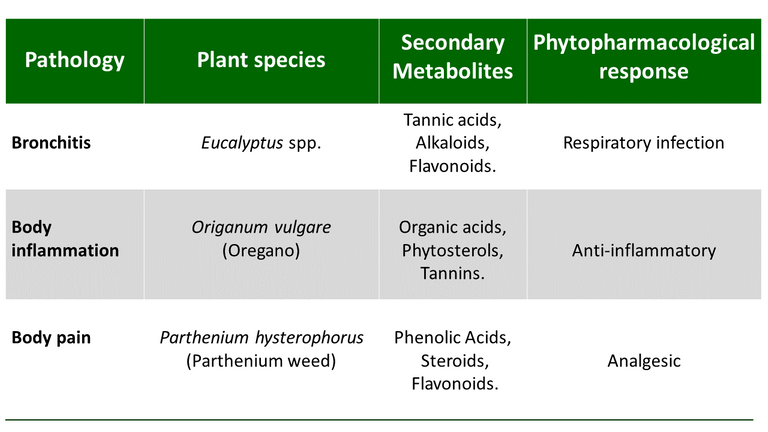
Fig. 5 Pathologies and phytopharmacological responses of some secondary metabolites present in plant species; Eucalyptus spp. (Eucalyptus), Origanum vulgare (Oregano), and Parthenium hysterophorus (Parthenium weed). Autor: @lupafilotaxia.
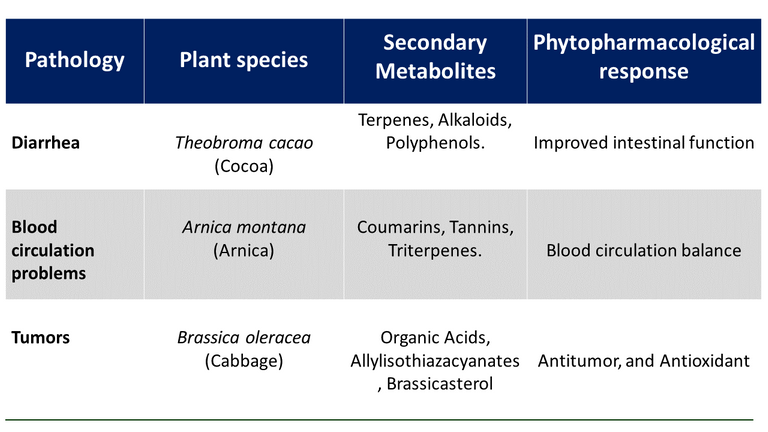
Fig. 6 Pathologies and phytopharmacological responses of some secondary metabolites present in plant species; Theobroma cacao (Cocoa), Arnica montana (Arnica), and Brassica oleracea (Cabbage). Autor: @lupafilotaxia.
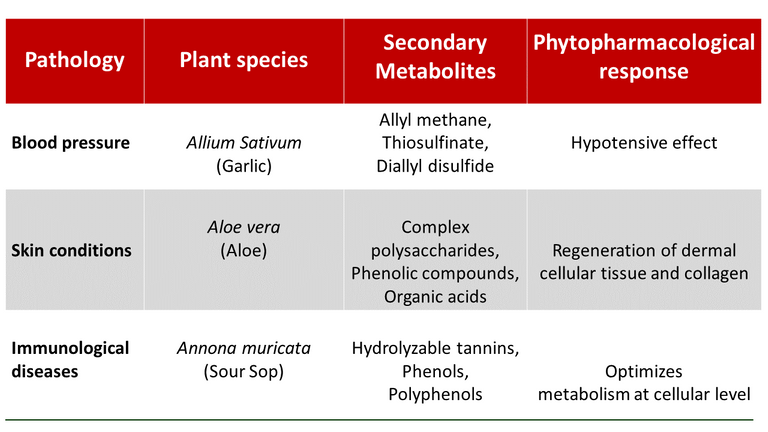
Fig. 7 Pathologies and phytopharmacological responses of some secondary metabolites present in plant species; Allium sativum (Garlic), Aloe vera (Aloe), and Annona muricata (Sour sop). Autor: @lupafilotaxia.
Phytopharmaceutical industry and formulations
Phytopharmaceutical industry
Paraglogically, being plant species the suppliers of the main substances with medicinal effects, within the pharmaceutical sector, the phytopharmaceutical industry is a predominantly weak sub-sector, mainly due to several adverse factors, among them;
a. Handcrafted production
Artisanal manufacturing has been identified as the main adverse element in the use of plant species to treat diseases, due to the lack of application of appropriate technological processes to extract secondary metabolites, so that this practice is far from the desired effect and does not promote optimal phytopharmaceuticals, since their production does not respond to ideal dosages, which tend to create favorable clinical responses.
b. Governmental vision
Even though the production of phytopharmaceuticals through artisanal manufacturing is a practice rooted in modern society, either due to the lack of knowledge of the actors that promote this activity, the lack of governmental vision is the second most outstanding adverse factor, since without the intervention of the state with all its institutional, economic and scientific power, the phytopharmaceutical industry is condemned to subsist in selective markets, mostly rural and with low profitability.
The World Health Organization and use of phytopharmaceuticals
In the early 80's, the World Health Organization (WHO) taking as a premise the growing poverty on a global scale, and the high costs of synthetic drugs, authorized the introduction of traditional medicinal resources to health systems, since then the use of medicinal plants and phytopharmaceuticals not only has a growing market, but also the number of professional therapists specializing in phytopharmacology has also been steadily increasing.
In this sense, it should be mentioned that in the case of Spanish-speaking countries, the professionalization of people with scientific tools to use the potential that plant species offer us, is unfortunately a topic that has had little interest. Some Central and South American countries have professional therapists specialized in phytopharmacology, however, the total number of existing therapists does not maintain a relationship in favor of the percentage of indigenous population. This can be determined by analyzing that countries such as Guatemala, Peru, Mexico and Ecuador, even when they have the highest percentages of indigenous population, have not exploited the ancestral knowledge that these communities have in the use of plant species to cure diseases [5] .
Formulations and development of new phytopharmaceuticals
Regarding the formulations and protocols to be executed for the development of new phytopharmaceuticals, it is of vital importance that the effects initially attributed to a given plant species are verified through experimentation, so that, if a plant species has pharmacological effects, before proceeding to extract its secondary metabolites, it is first necessary to identify the organic substances with their specific physiological responses, then generate the respective experimental phytopharmacology assays, and finally to execute clinical phytopharmacology tests.
Since the identification of the organic substance, experimental phytopharmacology and clinical phytopharmacology are the three essential phases of phytopharmacological research, they must provide sufficiently valid information in order to proceed with the respective formulations, with their pertinent recommendations and dosages, as well as information about the pharmacokinetic profile, short, medium and long term toxicological potential, adverse effects and the name of the active ingredient.
CONTRIBUTIONS OF THIS PUBLICATION
- The information described in the present post, needed to socialize with users of the HIVE platform and particularly with members of the #STEMsocial community biological elements in a logical order through ancestral and scientific approaches, mainly those closely related to the role of secondary metabolites present in plant species, and their positive effect on the treatment of diseases that afflict humans.
BIBLIOGRAPHICAL REFERENCES CONSULTED AND CITED:
[1] Zagrheca S. Libro blanco de los herbolarios y las plantas medicinales. Fundación Salud y Naturaleza. 2007; 176. Article: Online access
[2] Waizel J., y Waizel S. Las plantas con principios amargos y su uso medicinal. ¿Un futuro dulce?. Revisión sistemática. An Orl Mex. 2019; 64; 4: 202-228. Article: Online access
[3] Sierra M., Barros R., Gómez D., Mejía A., y Suarez D. Productos naturales: Metabolitos secundarios y aceites esenciales. Fundación Universitaria Agraria de Colombia - UNIAGRARIA. Bogotá D.C – Colombia. 2018; 56. Article: Online access
[4] Yubes R., Curi R., Cechinel V. Fármacos e fitoterápicos: A necessidade do desenvolvimento da indústria de fitoterápicos e fitofármacos no Brasil. Quim. Nova. 1001; 24; 1: 147-152. Article: Online access
[5] Nigenda G. Mora G., Aldama S., y Orozco E. La práctica de la medicina tradicional en América Latina y el Caribe: el dilema entre regulación y tolerancia. Salud Pública de México. 2001; 43; 1: 41 – 51. Article: Online access
[5] OMS. Complications of abortion - World Health Organization. Article: Online access
ATTENTION
Readers and followers
If you wish to read more scientific articles in English or Spanish, of excellent academic quality, do not hesitate to visit #STEMSocial and #STEM-espanol, communities that promote scientific content mainly in the areas of Science, Technology, Engineering and Mathematics.
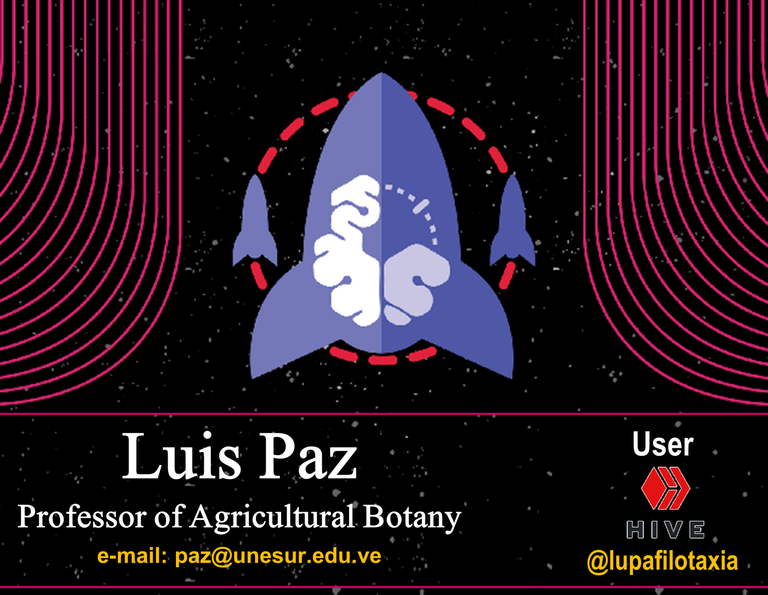
0
0
0.000
#Posh Twitter:
https://twitter.com/lupafilotaxia/status/1357426303285284870
Thanks for your contribution to the STEMsocial community. Feel free to join us on discord to get to know the rest of us!
Please consider supporting our funding proposal, approving our witness (@stem.witness) or delegating to the @stemsocial account (for some ROI).
Please consider using the STEMsocial app app and including @stemsocial as a beneficiary to get a stronger support.
Your post has been voted as a part of Encouragement program. Keep up the good work!
Try https://ecency.com and Earn Points in every action (being online, posting, commenting, reblog, vote and more).
Boost your earnings, double reward, double fun! 😉
Support Ecency, in our mission:
Ecency: https://ecency.com/proposals/141
Hivesigner: Vote for Proposal